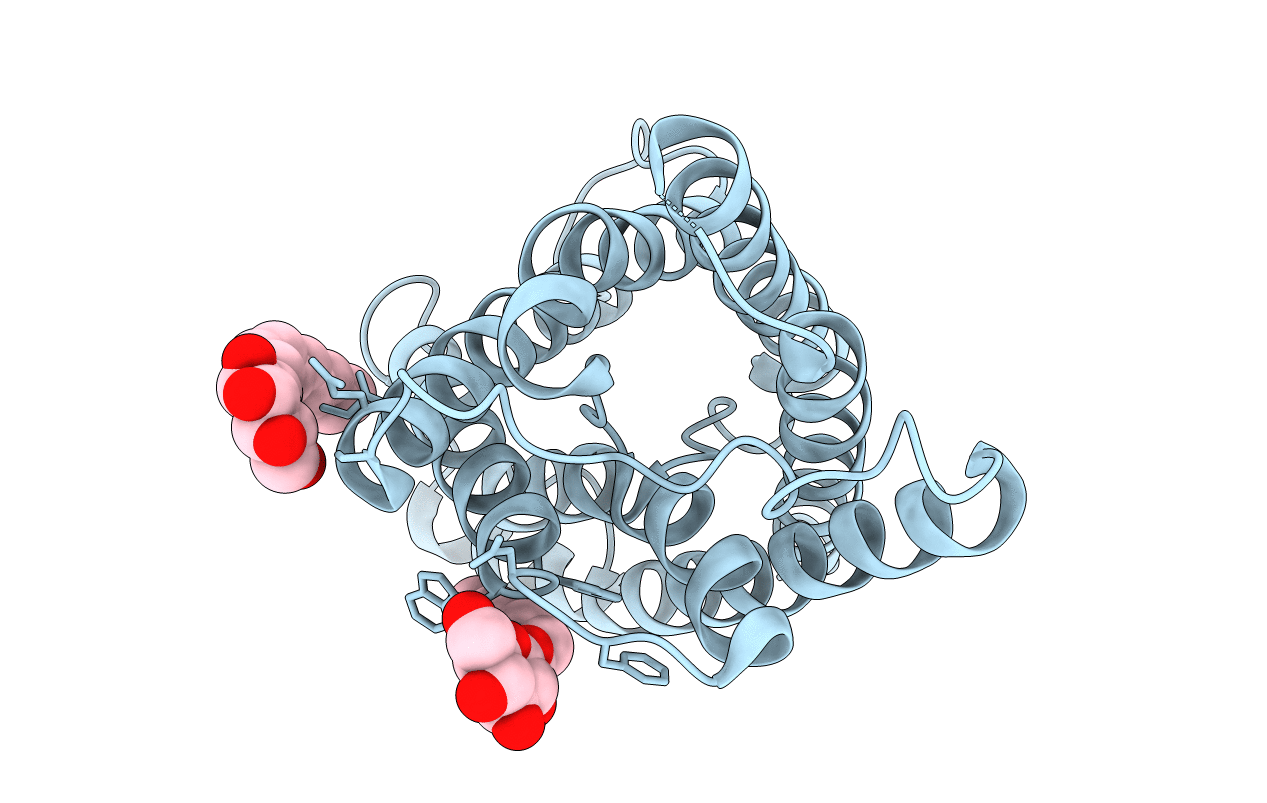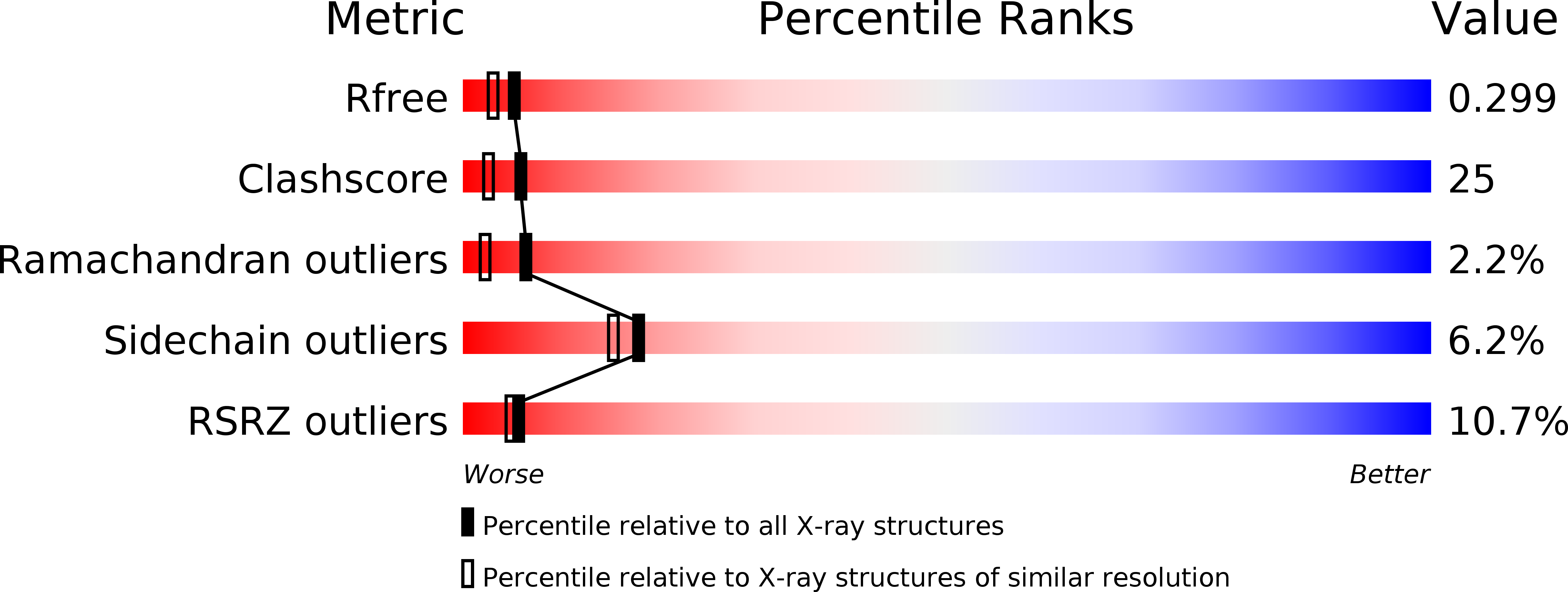
Deposition Date
2005-01-20
Release Date
2005-02-08
Last Version Date
2023-08-23
Entry Detail
PDB ID:
1YMG
Keywords:
Title:
The Channel Architecture of Aquaporin O at 2.2 Angstrom Resolution
Biological Source:
Source Organism:
Bos taurus (Taxon ID: 9913)
Method Details:
Experimental Method:
Resolution:
2.24 Å
R-Value Free:
0.30
R-Value Work:
0.24
R-Value Observed:
0.24
Space Group:
P 4 21 2


